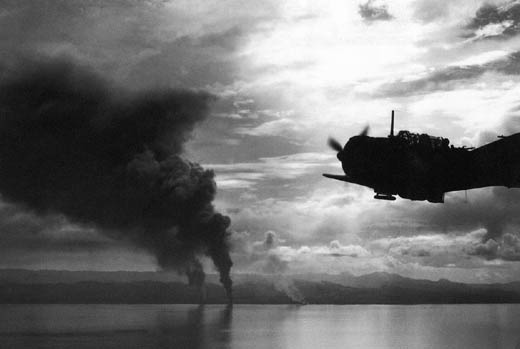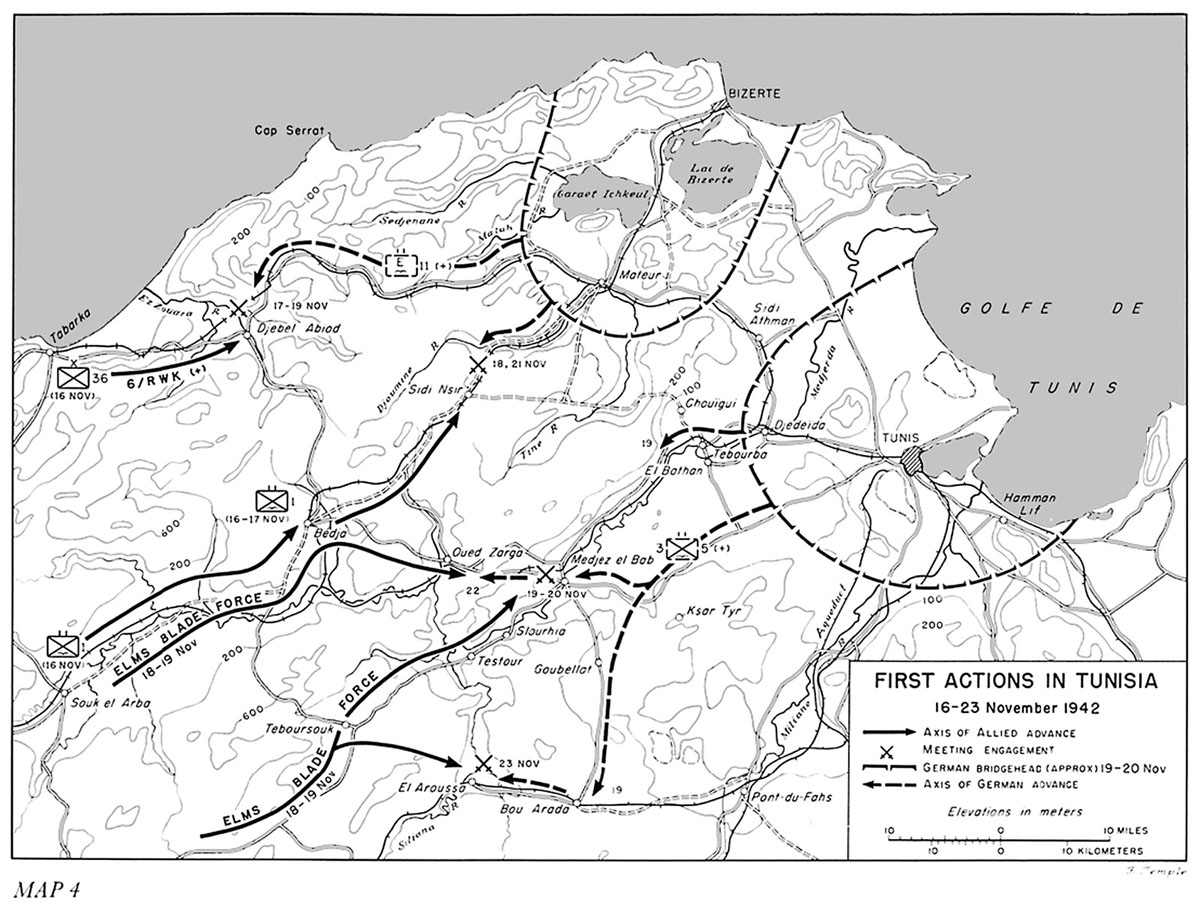Air Operations, Aleutians
XI Bomber Command reconnaissance bombers drop demolition charges on targets on Attu and Kiska islands.
[Air Operations, Europe
BOMBER COMMANDDaylight Ops:
- 6 Mosquitos bomb targets in the small towns of Emmerich, Jüich and Lingen without a loss.
- 65 aircraft lay mines in various places from Lorient to the Frisians; 2 Wellingtons and 1 Stirling are lost; 5 Halifaxes make leaflet flights over France without a loss.
Air Operations, Far East
US bombers raid Bangkok.
[Air Operations, New Guinea
V Bomber Command B-25s, 22d Medium Bomb Group B-26s, and 3d Light Bomb Group A-20s operating in support of the US 32nd Infantry Division attack numerous targets at Buna, Giruwa, Gona, Sanananda, and Soputa, including landing barges, troop concentrations, and antiaircraft emplacements.
[Air Operations, Tunisia
6 B-17s from the 97th Heavy Bomb Group's 340th Heavy Bomb Squadron attack Bizerte's Sidi Ahmed Airdrome, the first heavy-bomber mission flown by a XII Bomber Command unit.
[Guadalcanal
The 4 surviving transports of the Japanese convoy are sighted at Tassafaronga and attacked by artillery, naval gunfire and aircraft from Henderson Field and New Hebrides. All 4 are destroyed and supplies on the beach are fired. The decisive defeat almost isolates the Japanese on Guadalcanal.
Four Japanese Transports Burning at Tassafaronga |
 |
Mediterranean
- The Greek submarine Triton is sunk by the German auxiliary submarine chaser UJ-2102 in the Aegean Sea off Kafirea, Euboia Island.
- The British submarine Safari sinks the German steamer Hans Arp (2645t) near Benghazi.
New Britain
The Japanese establish the headquarters of the 8th Army under Gen Hitoshi Imamura at Rabaul. Operating under him also are the 17th Army in the Solomons and the 18th Army in New Guinea.
[New Guinea
The Australians and the Americans begin operations against the Japanese beachhead in the Buna-Gona area. The American 32nd Division advances on Buna and the Australian 7th Division moves on Gona and Sanananda. The Allies had expected to find the Japanese disorganized and demoralized, but instead thay are quite ready to put up a vigorous difense, favored by the broken terrain and a line of strongpoints. The Japanese troops are commanded by Col Yosuke Yokoyama, west of the Girua River, and by Capt Yoshitatsu Yasuda east of the river. Gen Horii has disappeared during the retreat from the Kokoda track. The American landing south of Buna is held up by Japanese aircraft.
In the Australian 7th Division sector on the west, the 25th Brigade moves toward Gona and the 16th toward Sanananda. To the east, the US 32nd Division's 126th Infantry heads for Buna along the axis Inonda-Horanda-Dobodura, and Warren Force (based on the 128th Infantry) moves along the coast toward Cape Endaiadere. Although by evening Australian artillery is employed to support the coastal advance, Warren Force suffers a severe blow when small craft bringing urgently needed supplies are destroyed by enemy planes. Among personnel embarked on these is Maj-Gen Edwin F. Harding, CG of the US 32nd Division, who swims ashore.
[North Africa
TUNISIAThe whole country is now occupied by Axis troops. Several thousand German troops form a bridgehead in the Bizerte-Tunis area. The British 1st Parachute Battalion takes Souk el Arba, 30 miles south of Tabarka. The British 36th Bde farther north takes Djebel Abiod. Late in the day the paratroops have reached nearly to Beja. The first engagements between French and German troops take place at Oued Zarga, Mateur and the road between Beja and Djebel Abiod. The French forces drive off the German patrols.
Gen de Gaulle announces that he and his Free French supporters do not accept Darlan's authority. Many British politicians are worried, too, about cooperating with a former member of the Vichy government. The Americans have been always much more ready to favor Vichy than the British and, therefore, see nothing wrong with such a useful arrangement.
First Actions in Tunisia, November 16-23, 1942. |
 |